Step into a world where the impossible becomes reality. The forests are alive with creatures so magical, they might as well have stepped out of a dream. Glowing beings, mythical guardians, and enchanted animals roam the shadows, each more extraordinary than the last.
These aren’t your everyday woodland creatures. From shimmering coats to powers that defy the laws of nature, these beings will make you wonder if you’ve stumbled into a fantasy novel.
Prepare to meet the forest’s most surreal inhabitants—each one holding secrets and traits that are beyond imagination. Get ready to leave the ordinary world behind and step into the enchanted wild!
Glasswing Butterfly
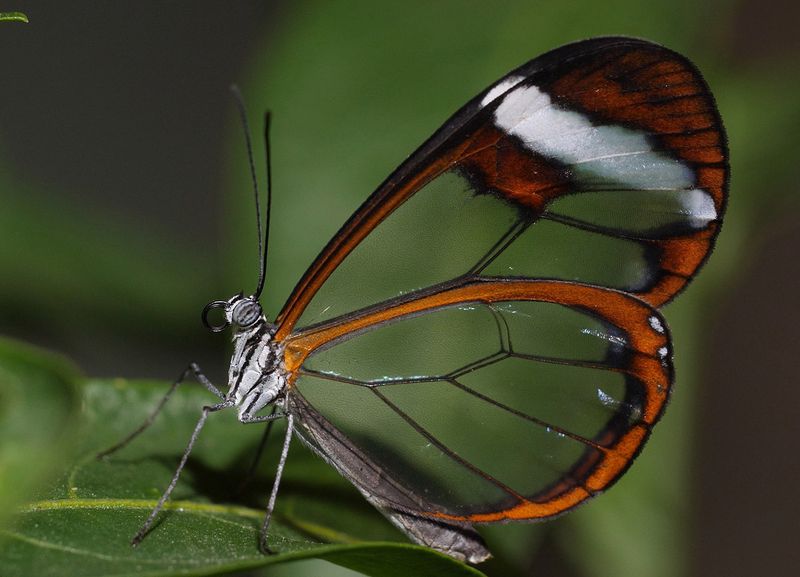
The Glasswing Butterfly is a marvel of nature with its nearly invisible wings. These delicate wings allow this butterfly to blend seamlessly into its surroundings, avoiding predators with ease.
The faint, shimmering outline of the wings catches the light beautifully, creating a mesmerizing dance in the air. They are often seen fluttering among the forest blossoms, their presence almost like a gentle whisper.
The Glasswing’s ethereal appearance is not just for show; it’s an ingenious survival mechanism. Observing one in its natural habitat feels like witnessing a living work of art.
Bioluminescent Millipede
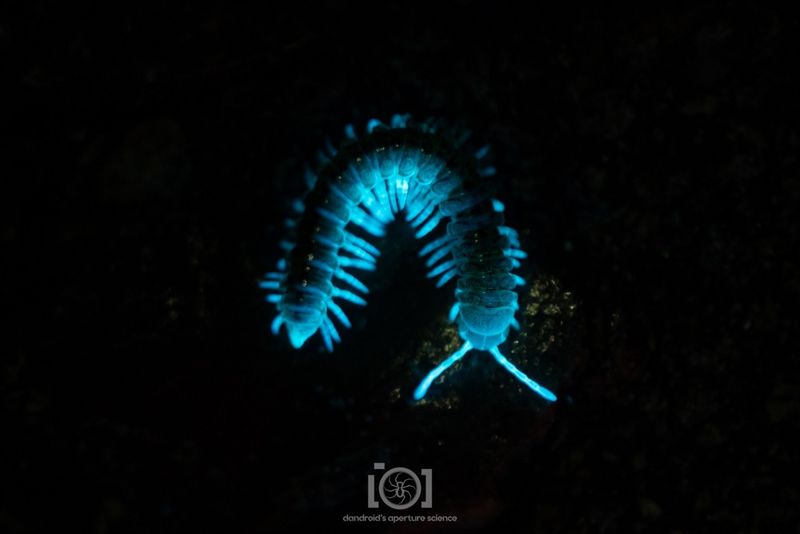
In the depths of the forest, the Bioluminescent Millipede crawls with an otherworldly glow. This creature emits a serene green light, illuminating the forest floor during the nighttime.
Its glow is both a warning to predators and a way to navigate through the darkness. The millipede’s glow is caused by a chemical reaction in its body, a captivating display of nature’s ingenuity.
As you watch it move, it’s as if the forest floor is coming alive with tiny, gentle lights, creating an enchanting scene straight out of a fairy tale.
Mimic Octopus

The Mimic Octopus is a true shape-shifter of the forest waters. Found in shallow, murky streams, this octopus can change its color and shape to imitate other sea creatures and even land animals.
It’s an expert in deception, mimicking everything from lionfish to flatfish. Its ability to transform is not just a means of hunting but also a defensive strategy.
Watching a Mimic Octopus in action is like witnessing a performance where nature is both the stage and the performer. It’s a remarkable testament to adaptability and survival.
Leaf-Tailed Gecko
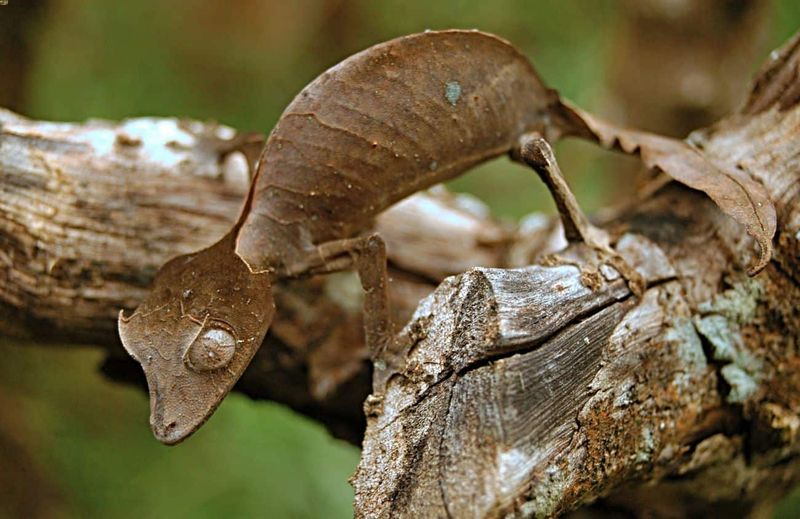
The Leaf-Tailed Gecko is a master of disguise, blending into the forest foliage with remarkable precision. Its tail and body are camouflaged to look exactly like leaves, providing it with unmatched stealth.
It’s an expert in evading predators, remaining almost invisible against the green backdrop. This gecko’s ability to disappear among the leaves makes it a fascinating creature to observe.
It showcases the wonders of evolution, adapting perfectly to its environment. Spotting one feels like finding a hidden secret among the trees.
Rainbow Stag Beetle
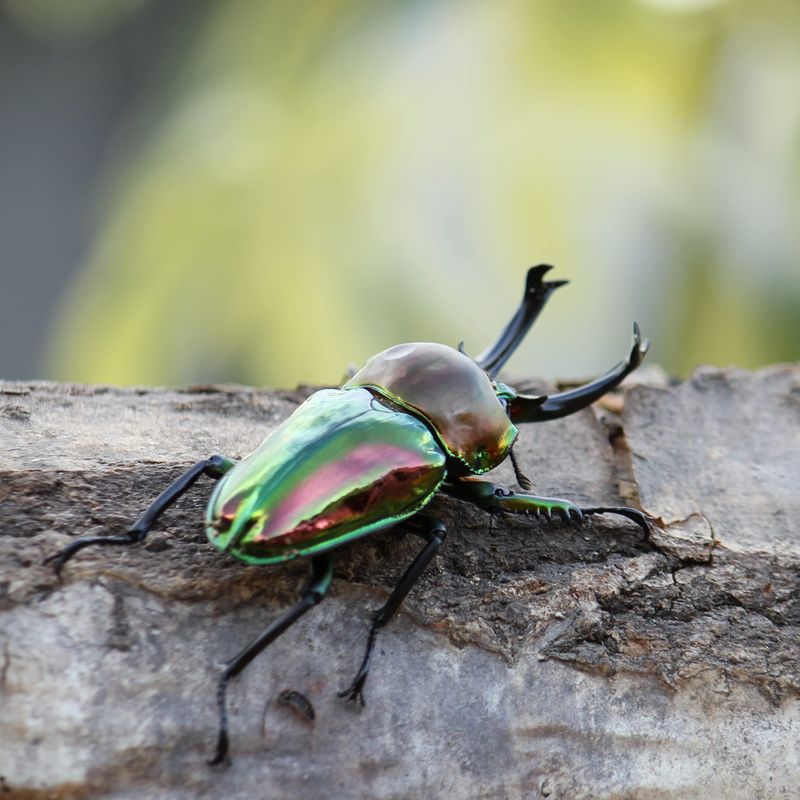
The Rainbow Stag Beetle is a vibrant jewel of the forest. Its iridescent exoskeleton reflects a dazzling array of colors, from emerald greens to deep purples. This beetle’s striking appearance is not just for display; it’s believed to play a role in mating rituals.
Found on moss-covered logs, the Rainbow Stag Beetle adds a splash of color to the forest floor. Its majestic appearance is a reminder of the hidden treasures that nature has to offer. Observing one up close feels like gazing at a living gem.
Axolotl
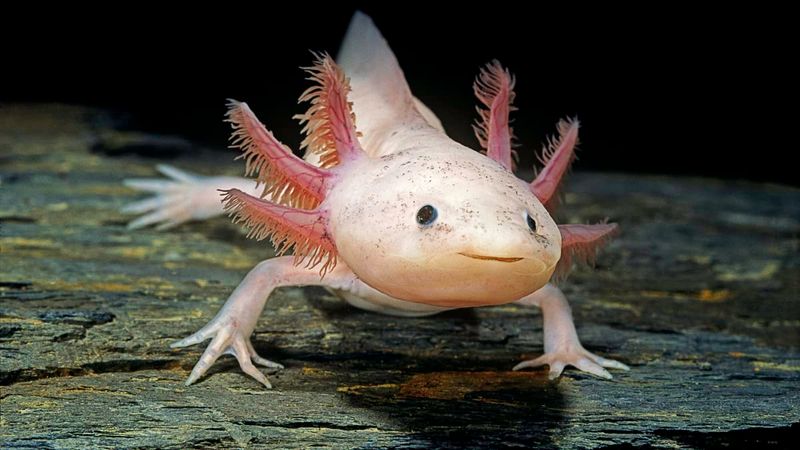
Often dubbed the ‘Mexican walking fish,’ the axolotl is a unique amphibian that retains its juvenile features throughout its life. This neotenic trait allows it to live and reproduce while still in its larval form, a characteristic that feels straight out of a fantasy novel.
The pink and white shades of the axolotl, along with its feathery external gills, give it an otherworldly appearance. Its ability to regenerate lost body parts adds to its mythical aura, making it a favorite subject in tales of wonder and science alike.
In the wild, these creatures inhabit the remnants of Xochimilco near Mexico City, a place where urban sprawl and wildlife meet in an extraordinary blend.
Glass Frog

As if crafted by nature’s most delicate hand, glass frogs possess skin so translucent that their internal organs are visible. This transparency serves as a perfect camouflage against predators, blending seamlessly into the verdant rainforest foliage.
Found in Central and South America, these frogs are extraordinary examples of evolution’s creativity, their glass-like appearance a trait more befitting a wizard’s familiar than a mere amphibian.
With their ability to remain unseen, glass frogs invite a sense of wonder and discovery, as if they hold secrets of the rainforest yet to be uncovered.
Okapi
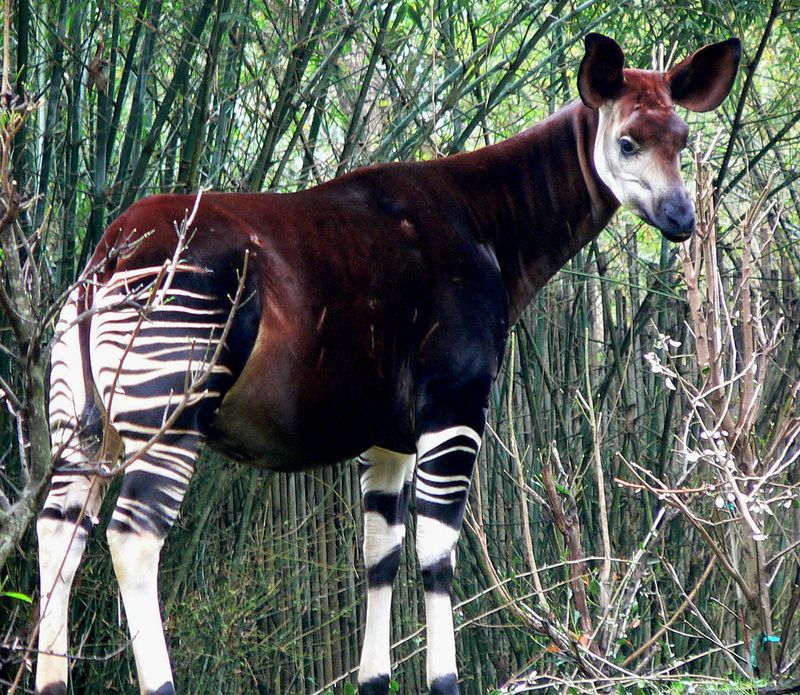
The okapi, a distant relative of the giraffe, resides in the dense rainforests of the Democratic Republic of Congo. Its zebra-like stripes on the legs provide a surreal visual contrast against its otherwise giraffe-like body, a combination that seems conjured from the imagination.
These elusive creatures are masters of disguise, their unique markings helping them blend into the dappled light of their forest habitat. The okapi’s mysterious nature and striking appearance make it a fitting candidate for the role of a forest guardian in any fantastical tale.
Their solitary existence deep within the forest heightens their enigmatic allure, leaving those who encounter them with a sense of awe and curiosity.
Lyrebird
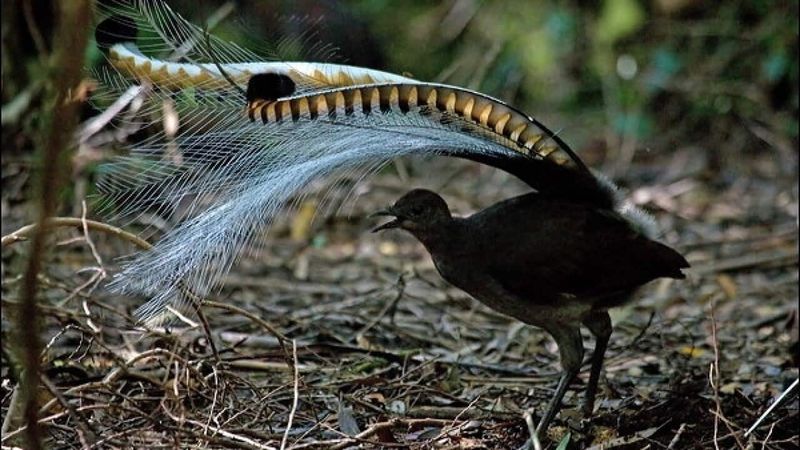
The Lyrebird, native to the forests of Australia, is renowned for its incredible ability to mimic natural and artificial sounds. Standing amidst the dense foliage, it can replicate chainsaws, camera shutters, and even other bird calls with astonishing accuracy. This bird’s tail feathers are a sight to behold, unfurling like a lyre when it sings.
In the heart of the forest, the Lyrebird’s song echoes, creating a symphony that feels both familiar and otherworldly. Its talent for imitation is not just a survival skill; it’s an art form that captivates the attention of all forest dwellers. The elegant dance of its tail feathers only adds to its mystique, reminiscent of a forest spirit.
Observing a Lyrebird in its natural habitat is like watching a master performer at work. Its ability to weave a tapestry of sounds around it creates a magical atmosphere, making it a true icon of the forest.
Aye-Aye
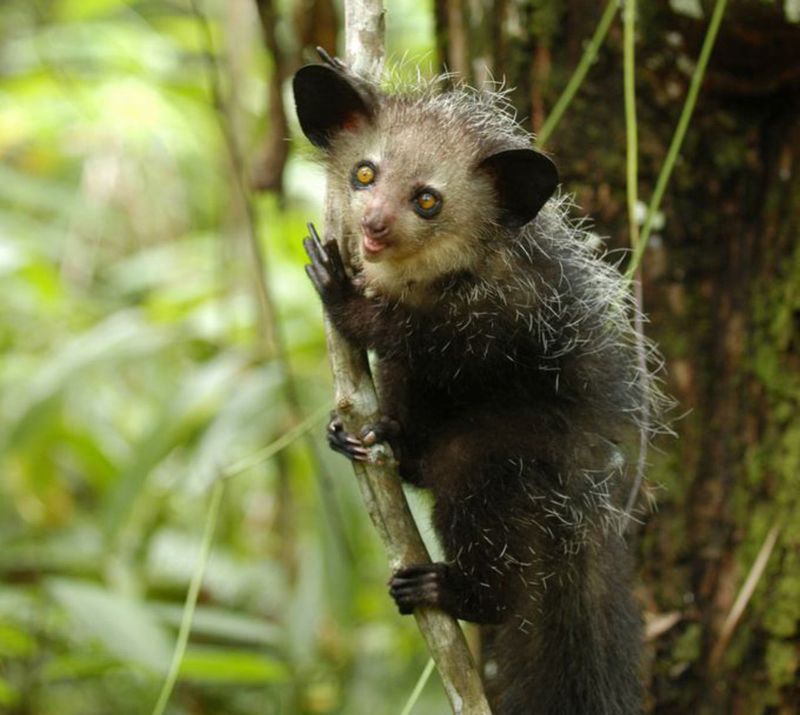
The Aye-Aye, native to Madagascar’s rainforests, is a creature that defies conventional beauty but captures the imagination with its peculiar traits. Its long, bony middle finger is its most distinctive feature, used to tap on trees to locate grubs.
Under the cover of night, the Aye-Aye emerges, its large eyes scanning the forest for its next meal. This nocturnal primate’s hunting method is a blend of patience and precision, reminiscent of a sorcerer casting spells in the dark.
Encountering an Aye-Aye is like stepping into a narrative where the unexpected becomes the norm. Its unusual appearance and techniques make it a fascinating subject for both scientists and storytellers alike.
Ribbon Tailed Astrapia
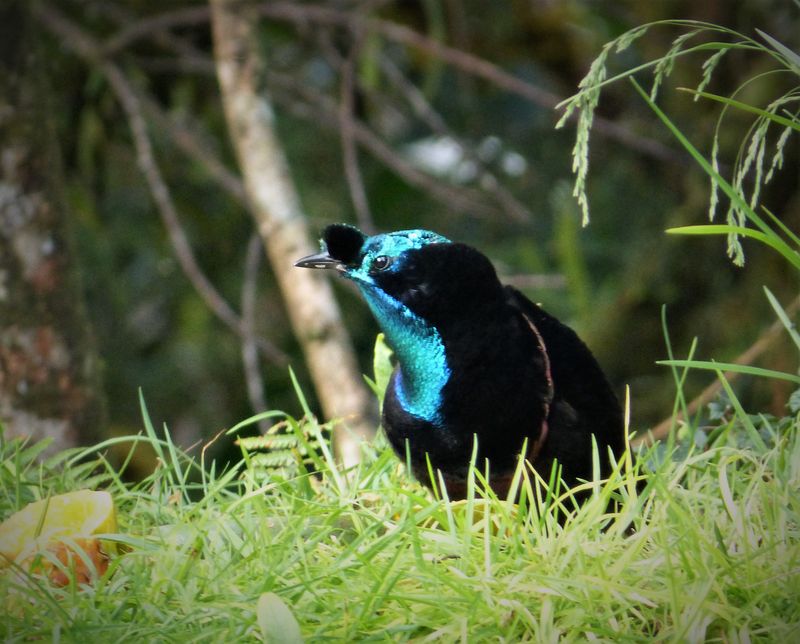
Elegance takes flight with the Ribbon Tailed Astrapia, a bird of sheer beauty and grace. This avian wonder boasts a tail that extends three times the length of its body, creating an ethereal ribbon that dances on the wind. Found in the highland forests of Papua New Guinea, it glimmers with iridescent shades of green and blue.
The Ribbon Tailed Astrapia’s tail feathers are a marvel of nature’s artistry, drawing admiration and awe from onlookers. These creatures are not just visually captivating but also play a vital role in their ecosystem, aiding in seed dispersal. With a diet consisting mainly of fruits and insects, they contribute significantly to the forest’s health.
Their courtship displays are as breathtaking as their appearance, featuring elaborate dances that showcase their magnificent tails. These performances are not only a testament to their beauty but also a crucial part of their mating rituals.
Shoebill Stork
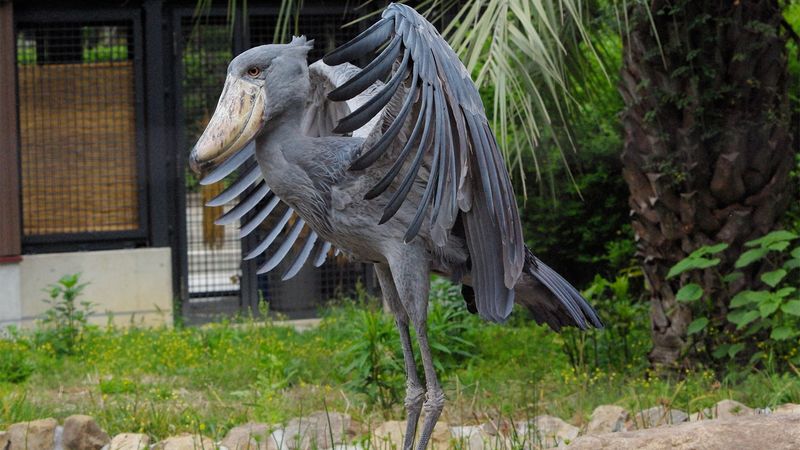
The Shoebill Stork, with its prehistoric visage, is a bird that fascinates and astonishes. Its massive, shoe-shaped bill is both a tool and a spectacle, capable of catching large prey with ease. Found in the swamps of Central and East Africa, it moves with a slow, deliberate grace.
Despite its imposing appearance, the Shoebill is a master of stealth, often standing motionless for hours before striking. This patience is rewarded with a diet primarily consisting of fish, frogs, and even small mammals. Its hunting technique is as impressive as its distinctive look.
The Shoebill’s presence in the wild is a testament to the diversity and wonder of avian life. Conservationists continue to monitor its populations, as habitat destruction poses ongoing threats to its survival.
Markhor

In the rugged mountains of Central Asia, the Markhor stands as a symbol of strength and majesty. Its spiral horns, twisting dramatically upwards, are a defining feature, making it one of the most visually striking members of the goat family. These horns are not just for show; they play a critical role in mating displays and territorial battles.
The Markhor’s agility in navigating rocky cliffs is unparalleled, showcasing an adaptation to its harsh mountainous environment. This nimbleness is crucial for evading predators and accessing scarce food resources. As herbivores, Markhors contribute to the ecological balance by influencing plant growth and seed dispersion.
Conservation efforts have led to a remarkable recovery in Markhor populations, turning it from a near-threatened species to a conservation success story. This resurgence highlights the importance of sustained efforts in wildlife protection.
Mandarin Duck
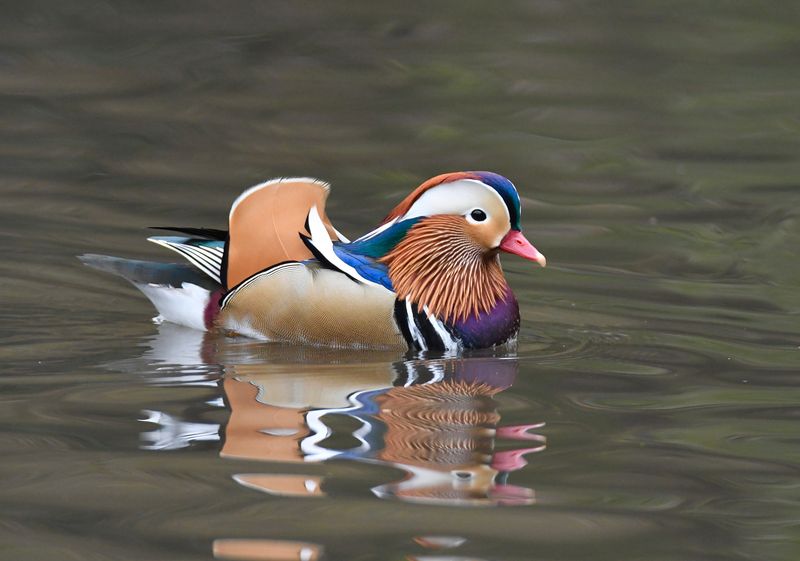
The Mandarin Duck is a marvel of nature, draped in a palette of colors that seem almost too brilliant to be real. With its shimmering orange “sails” and iridescent feathers, it glides across forest ponds like a living piece of art.
No corner of its appearance is left untouched by vibrancy. These ducks are often found in small forested lakes or streams, where their reflective feathers catch the eye of any passerby.
Their presence adds a dash of the extraordinary to the serene forest backdrop. When they pair up, these birds exhibit incredible synchronicity, creating a mesmerizing dance that enchants observers.
Pink Fairy Armadillo
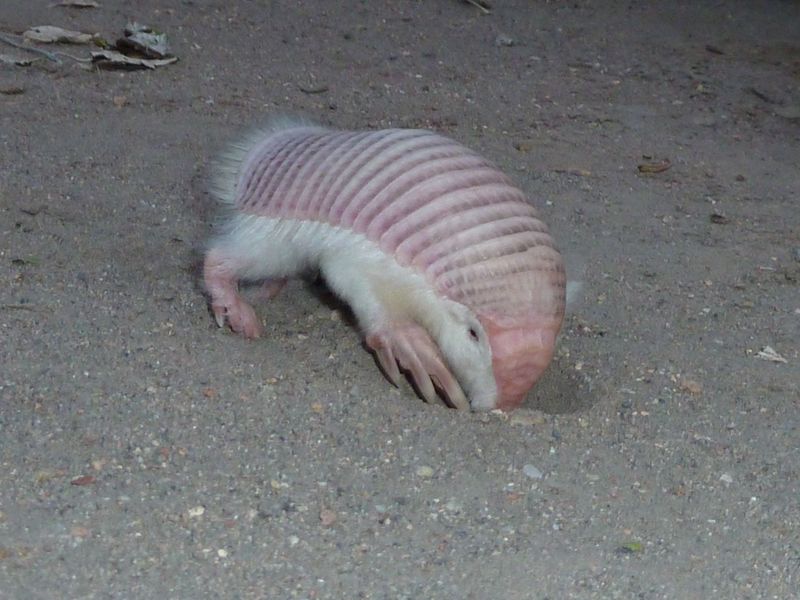
The Pink Fairy Armadillo is an enchanting creature that seems to borrow its charm from fairy tales. Known for its rosy, velvety shell, this tiny armadillo is a master burrower, often seen digging through soft forest soils.
Its unique coloration and small size make it a rare and delightful sight. It inhabits dry forest areas where the soil is easy to penetrate, living a largely nocturnal life. Despite its delicate appearance, it is a resilient creature, perfectly adapted to its environment.
Its presence adds a touch of magic to the forest floor, as if a miniature knight patrols the earth beneath the moonlight.
Glass Lizard

The Glass Lizard, often mistaken for a snake, is a fascinating reptile with a body that seems to glitter under the forest canopy. Despite its legless form, it’s in fact a lizard, navigating the leafy terrain with surprising agility and grace, thanks to its muscular build and flexible body.
These lizards are often spotted basking in the sun, their scales acting like tiny prisms. Their ability to shed their tail when threatened adds an element of intrigue to their already captivating existence. This trait, coupled with their sleek, smooth bodies, makes them resemble a living piece of glass art.
Saola
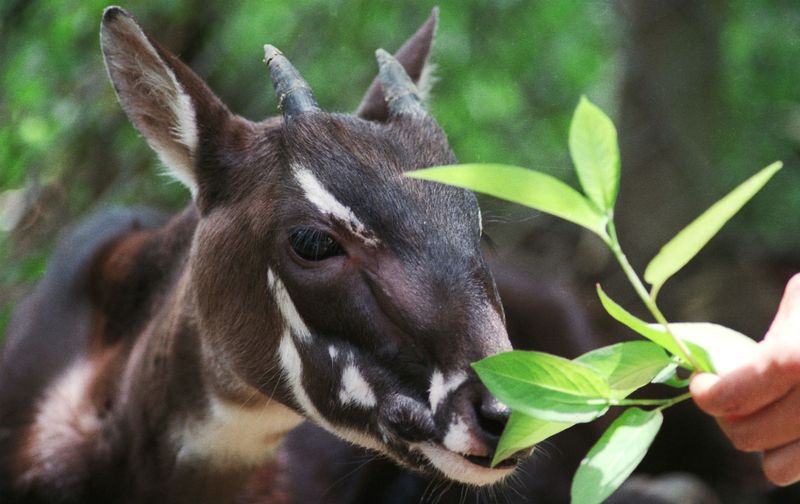
Saola
In the misty Annamite Mountains, a creature known as the Saola glides silently through the underbrush. Often referred to as the ‘Asian unicorn,’ this elusive mammal is a sight few have witnessed in the wild.
Its long, parallel horns and striking white facial markings give it an otherworldly appearance that captivates the imagination. Despite its ethereal beauty, the Saola faces critical endangerment due to habitat loss and poaching.
Conservationists are working tirelessly to protect this enigmatic species, hoping to preserve its place in the world’s natural heritage. Encountering the Saola is akin to stepping into a realm where myths come to life.
Thorny Devil
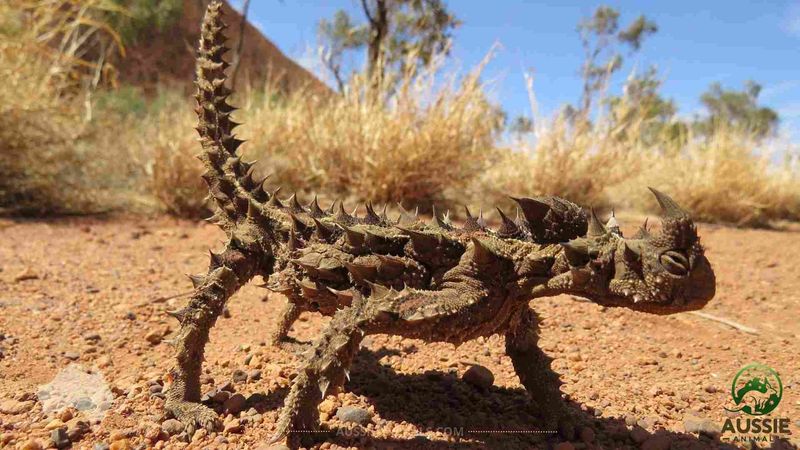
Thorny Devil
The Thorny Devil, with its crown of spikes and mesmerizing camouflage, looks as if it belongs in a dragon’s lair. Found in the arid forests of Australia, this lizard’s spiny exterior serves as both defense and disguise.
Its unusual gait, resembling a slow, swaying dance, adds to its mythical presence. This reptile’s diet consists mainly of ants, which it consumes using its sticky tongue.
The Thorny Devil’s ability to collect dew and channel it to its mouth through grooves in its skin only adds to its extraordinary repertoire of survival tactics. Observers are often left in awe of this miniature dragon of the forest.
Sunda Colugo

Sunda Colugo
Often mistaken for a mere shadow in the trees, the Sunda Colugo possesses a gliding prowess that rivals the mythical creatures of old. Found in the dense forests of Southeast Asia, this remarkable mammal is equipped with a vast membrane stretching from its neck to the tips of its limbs, allowing it to soar between trees with grace.
The Colugo’s nocturnal lifestyle and large, reflective eyes lend it an aura of mystery under the moonlit canopy. This creature’s silent, balletic movements and ability to navigate the forest’s heights make it a true apparition of the night, inspiring tales of flying beasts and enchanted forests.
Giant Leaf Insect

© NC Museum of Natural Sciences Education Blog – WordPress.com
The Giant Leaf Insect, an expert mimic, transforms the art of camouflage into a surreal spectacle. Found in the lush forests, this insect’s body resembles a leaf so closely that it’s nearly impossible to distinguish. Every vein, every edge of its body imitates a leaf’s texture and color, creating an illusion that deceives both predators and prey.
This remarkable adaptation is a survival strategy, allowing the Giant Leaf Insect to evade detection. As it sways gently on the branches, it mirrors the movement of surrounding leaves, enhancing its disguise. Its ability to blend in with its environment is not just a fascinating trait but a critical part of its survival.
Beyond its camouflage, the Giant Leaf Insect is a crucial player in its habitat. By feeding on leaves, it helps control plant growth, maintaining the delicate balance of its ecosystem. Its existence is a perfect example of evolution’s artistry, where function and form unite in breathtaking harmony.
Resplendent Quetzal
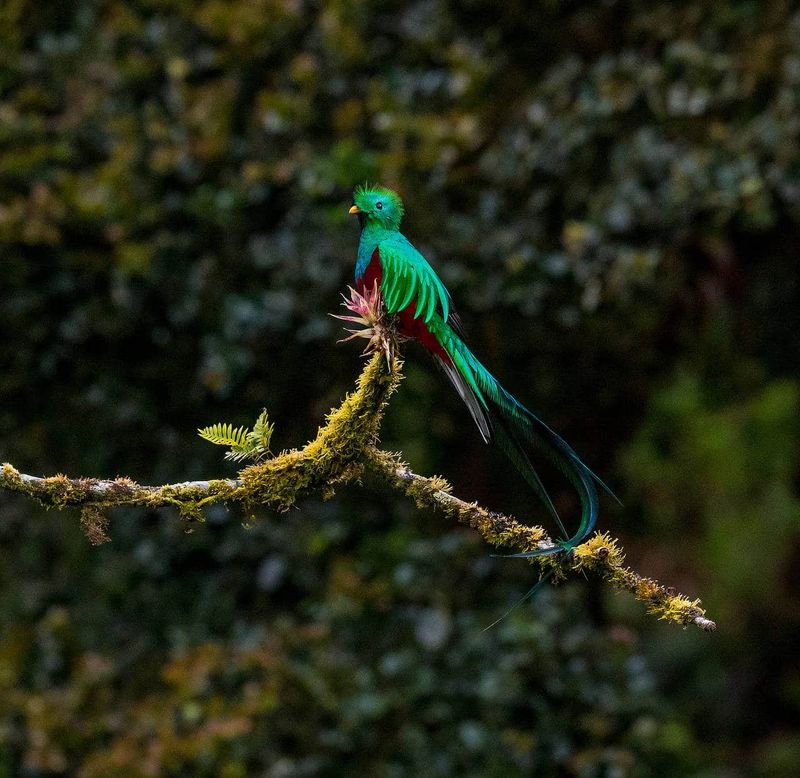
The resplendent quetzal is a vision of brilliance soaring through the cloud forests of Central America. With its shimmering emerald feathers and vibrant crimson belly, it captivates all who glimpse it.
This bird’s long tail feathers trail behind like a regal train, enhancing its mythical appearance. In the dappled sunlight of the canopy, the quetzal’s plumage reflects light in a dazzling display, reminiscent of precious jewels.
Its ethereal song echoes through the forest, a melody as captivating as its appearance. Encountering a quetzal is like stepping into a magical realm, where nature artfully blends reality and fantasy.
For many cultures, the quetzal symbolizes freedom and beauty, a creature that embodies the spirit of the wilderness. Observing this bird is not just a sight; it is an experience that nourishes the soul, urging us to preserve the enchanting habitats it calls home.
Phantasmal Poison Frog
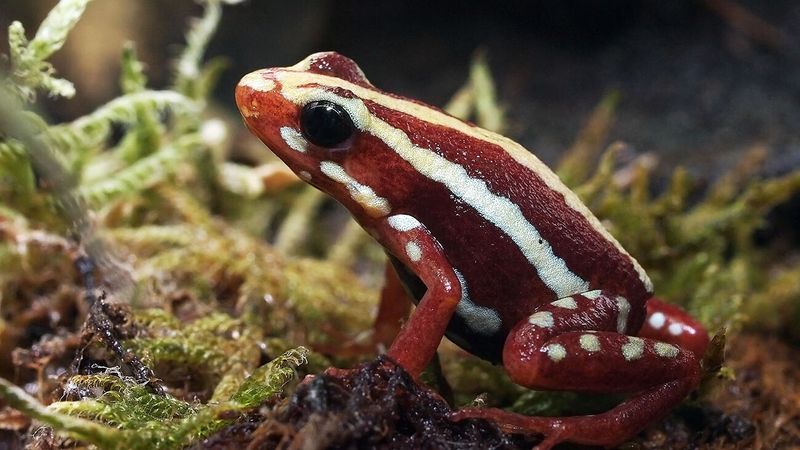
The Phantasmal Poison Frog, with its vivid coloration, appears as if it’s been conjured from a mythical narrative. Native to the lush rainforests, its bright hues are both a warning and a marvel. These frogs use their striking appearance to signal potential danger to predators, a testament to the saying that beauty can be deadly.
Despite their small size, these frogs hold a place of significance in their ecosystem. Their presence indicates a healthy environment, as they are sensitive to changes in habitat quality. The Phantasmal Poison Frog’s brilliant colors are not just for show; they are an evolutionary strategy to ensure their survival.
Their vibrant existence adds a splash of color and intrigue to the forest floor. By studying these frogs, researchers gain insights into environmental health and biodiversity. Their surreal appearance serves as a reminder of the vibrant life that thrives within the forest’s depths.
Indian Paradise Flycatcher
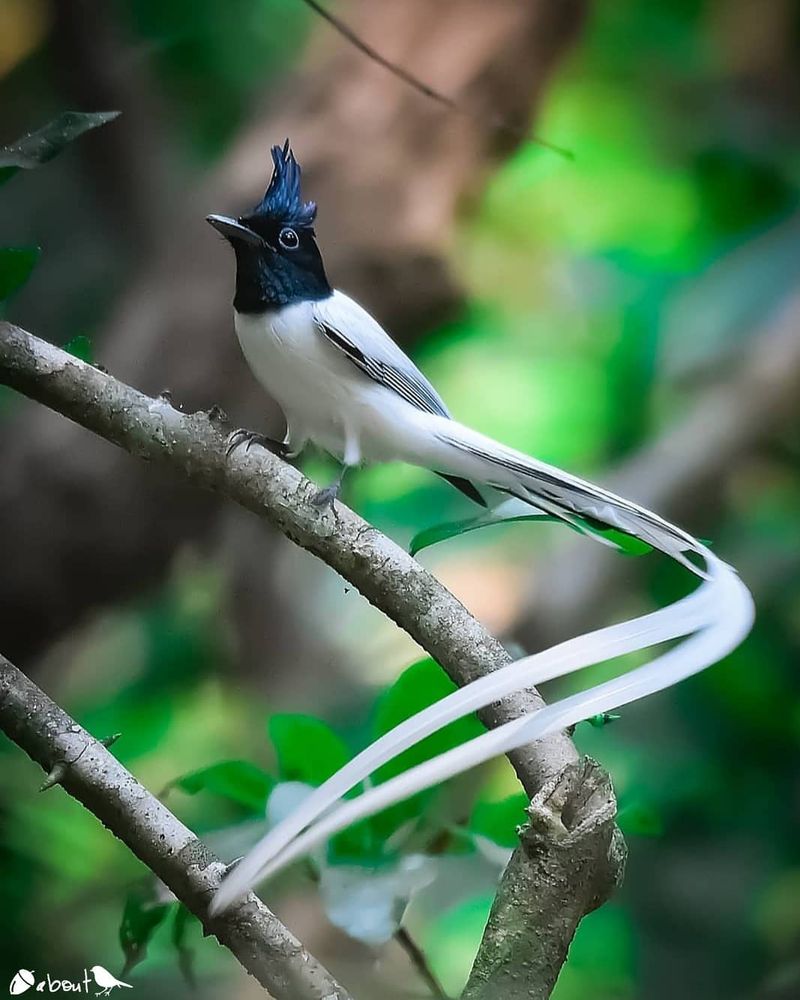
The Indian Paradise Flycatcher is a bird of exquisite beauty, its long, flowing tail feathers trailing behind it like a bridal train. Found in the forests of the Indian subcontinent, this bird’s appearance is a testament to nature’s artistry.
Males sport a distinctive crown and can exhibit a range of colors, from white to deep chestnut. These birds are often seen darting through the canopy, their agile flight mesmerizing observers.
Their melodious calls add a soundtrack to the forest, making their presence known to all who wander into their realm. To see one is to witness a fragment of a dream brought to life.

